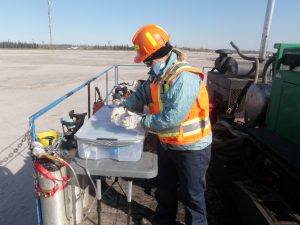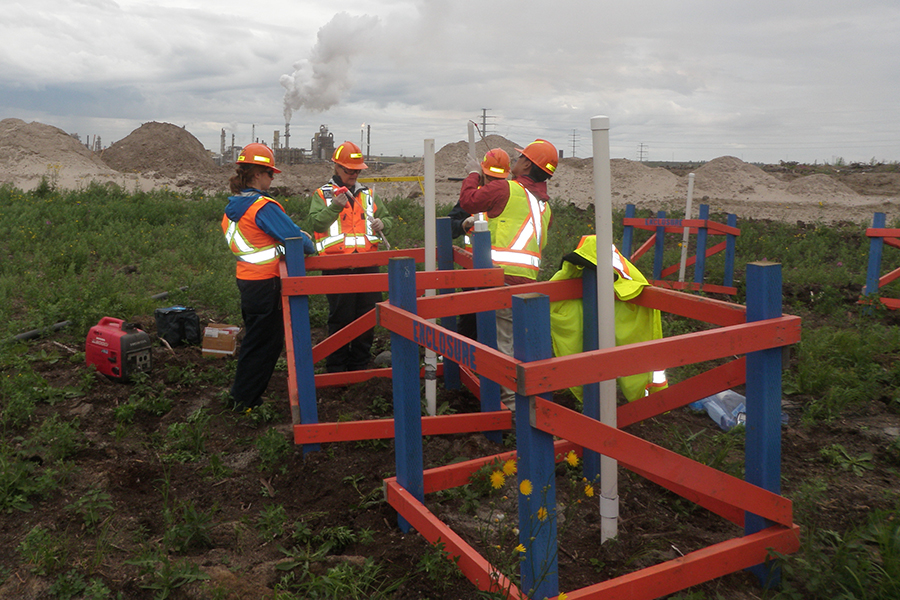
In a variety of environments — lakes, soils, even mining wastewater — bacteria carry out a wide range of chemical reactions. But a new study from Professor Lesley Warren (CivMin, Lassonde Institute) and her collaborators suggests that previously unknown viruses might also play a key role. The biocatalytic power of these organisms could one day be harnessed in the fight against climate change.
The past year has demonstrated just how powerful and disruptive viruses can be, not only to our health but also risks to our social structures, economies and even our planet.
But viruses don’t only cause disease in humans; plenty of them also infect bacteria. Known as bacteriophages, or just phages, the vast majority of these viruses are poorly understood due to the challenges of growing and studying them in the lab.
However, earlier this year, a new paper in Nature outlined surprising findings from this field: the discovery that some naturally-occurring phages have very large genomes. This is in contrast to previously held understanding that because viruses rely on their host’s replication machinery to multiply, they contain very few genes.
“The discovery that these viruses have large genomes and possess potentially functional genes leads us to ask: what can these genes do?” says Warren. “What are their undiscovered capabilities? What are we underestimating about them?”
Warren and her colleagues use a technique known as metagenomics to learn about wild viruses without having to culture them directly. By extracting and studying viral genetic sequences from wastewater, soil or other media, they can learn about the biochemical processes these life forms may be able to perform.
Last month, Warren, along with Professor Jill Banfield and Dr. Lin-Xing Chen (first author) of the University of California, Berkeley, co-authored a paper in Nature Microbiology that offers some answers.
The team sampled freshwater systems around the world, including Syncrude Canada’s Base Mine Lake, a commercial size demonstration of water capped tailings technology in northern Alberta. Owned by Syncrude Canada, Base Mine Lake serves as a research facility to test and demonstrate new tailings management technologies and to improve reclamation success outcomes for pit lakes.

From this location and others, the research team identified 22 large-genome phages that encode a critical gene called PmoC, which are called PmoC-phage. This PmoC gene is similar to genes present in bacteria that are capable of carrying out methane oxidation.
“Methane is a critical contributor to greenhouse gas emissions — it is 14 times more effective than CO2 at trapping heat in the atmosphere,” says Warren. “When oxidized, either by bacteria or perhaps as now as this paper identifies, viruses, it gets converted to carbon dioxide. That’s still a greenhouse gas, but it’s much less harmful than methane.”
The presence of PmoC-phage and bacteria capable of methane oxidation were strongly correlated with each other. In fact, the team determined that some of the most rapidly-growing, methane-eating bacteria were infected by three PmoC-phages at one time. These findings indicate that PmoC-phages may actually be increasing methane consumption by these bacteria.
On a fundamental level, these results provide more evidence that viruses are more than just infection vectors of other organisms — they may be important players in key environmental processes that regulate the planet.
In the future, harnessing naturally-occurring entities, such as viruses in addition to microorganisms, to change one gas into another could have important implications in the fight against climate change. This is especially true in places such as the Alberta oil sands, where methane emissions are of concern.
“Exploring these PmoC-phages in Base Mine Lake can help us design a bio-tech solution that would be cost-effective for industry, while helping fight greenhouse gas emissions and climate change,” says Warren. “Our work with Syncrude Canada over the past ten years is helping to develop research-powered solutions and technology for their real-world challenges.”
“Our analyses from not just Base Mine Lake, but other freshwater contexts globally, suggest that these PmoC-phages have the potential to impact methane consumption as well as the carbon cycle of the surrounding environments,” says Professor Banfield. “The inferences of this study expand our understanding of phage capabilities and highlight new ways for us to mitigate and modulate other aspects of our environment, perhaps in even larger contexts.”
